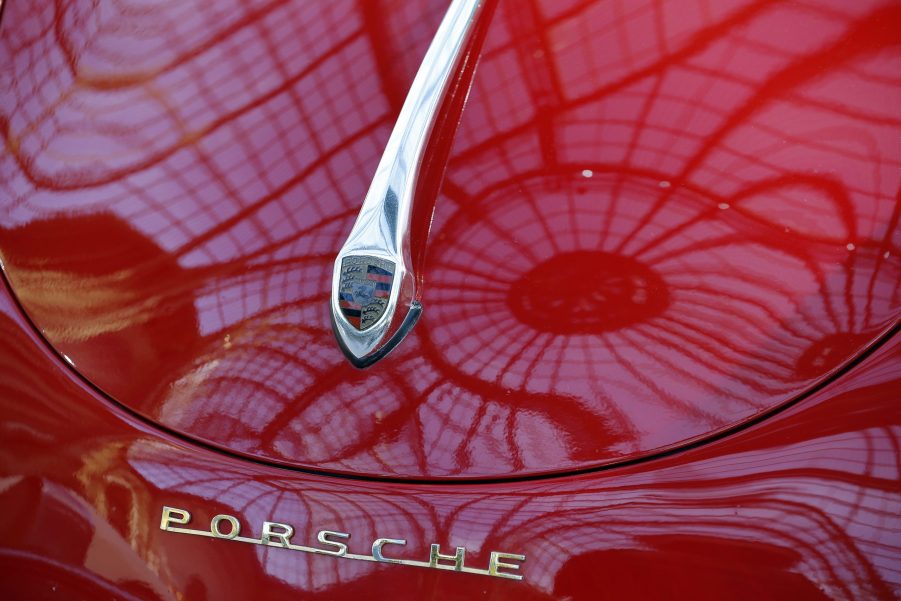
Valkyrie Racing Team Outfitted a Porsche 356A With Snow Shoes
Renee Brinkerhoff will drive her Porsche 356A over 350 miles across Antarctica and has outfitted the car with the tools it needs to handle the harsh conditions. Why a 356A of all cars? What is this for? How is she going to accomplish it? This isn’t Renee’s first race, not even at the helm of her versatile 356A, but it’s certainly going to be a challenge. Meanwhile, we can’t wait to see what happens.
Thrill-seeking isn’t Brinkerhoff’s endgame
Brinkerhoff started her crusade in 2017 to race her Porsche 356A on every single continent to raise awareness against child trafficking. Brinkerhoff has competed in several races over the years, some of them a first for a Porsche 356. Backed by her Valkyrie Racing Team, Brinkerhoff has helped raise $500,000 to fight child trafficking, with an end goal of $1 million. This massive effort is coming to a head in Antarctica.
Brinkerhoff’s Porsche 356A has raced all over the world

Porsche developed the 356A in 1956 and received many engines throughout its lifetime. It was always a rear-engine rear-wheel-drive car, and its 1500 GS Carrera model was the most powerful at 100 horsepower. Valkyrie Racing Team built its Porsche 356A in 2013 to handle all kinds of terrain, including mud, sand, and gravel, sometimes traveling up to 16,000 feet high. Now in the snows of Antarctica, the Porsche has traded in its wheels for skis and tracks. No doubt Valkyrie Racing gave it more juice, primarily to deal with the extra weight.
Renee Brinkerhoff is a record setter
Brinkerhoff got on the map in 2013 when she raced her Porsche 356 in the La Carrera Panamericana. Not only was she the first female to participate in the race, but she was also the first female to win the race in her class. Brinkerhoff went on to earn a podium every year the team participated in the Panamericana. By the end of this venture, she’ll have raced her Porsche 356, a total of 2,000 miles in some of the harshest conditions around the world.
How the Porsche 356A found its ski-legs
The Porsche is equipped for every contingency. A roll cage surrounds Renee as she trecks across the Antarctic under beating sunlight, and crevasse bars line the front of the car in case there are invisible breaks in the ice. She also has a gearbox temperature gauge, a winch, and survival gear. The cream de la creme is an air compressor powered by solar panels generating 150 watts, which can inflate a four-ton bag jack underneath the car. From an interview Brinkelhoff did with theDrive, Valkyrie Racing fitted the car with solar panels to reflect the sun and snow to provide extra energy. The car’s ideal weight rests at around 2,650 pounds and holds an engine and gearbox brace.
The skis at the front of the car also compact the snow for the rear tracks. This ideally prevents the car from falling through the snow. All of this took about 18 months at the hands of engineer and explorer Kieron Bradley. Nissan did something similar in 2018, but much less extreme. In 2018 Nissan announced its 370z ski car. It mostly abides by factory specs. It retained its 3.7-liter V6 and 332 horsepower, the steering system, and brakes and remained rear-wheel-drive. Nissan changed the suspension to accommodate its new shoes.
Full speed ahead to Antarctica

Valkyrie Racing isn’t being flippant and treating this like any other race. Polar explorers will assist Valkyrie Racing, along with record holders Jason de Carteret and Kieron Bradley. With Renee Brinkerhoff at the wheel, Valkyrie Racing will attempt to drive her Porsche 356A 356 miles across the ice and snow and set a new land speed record in the process.


